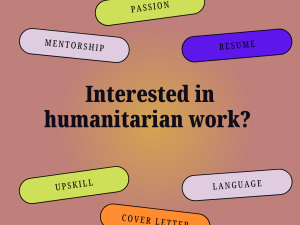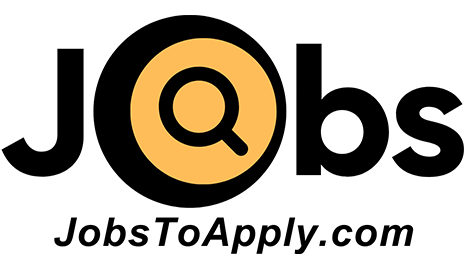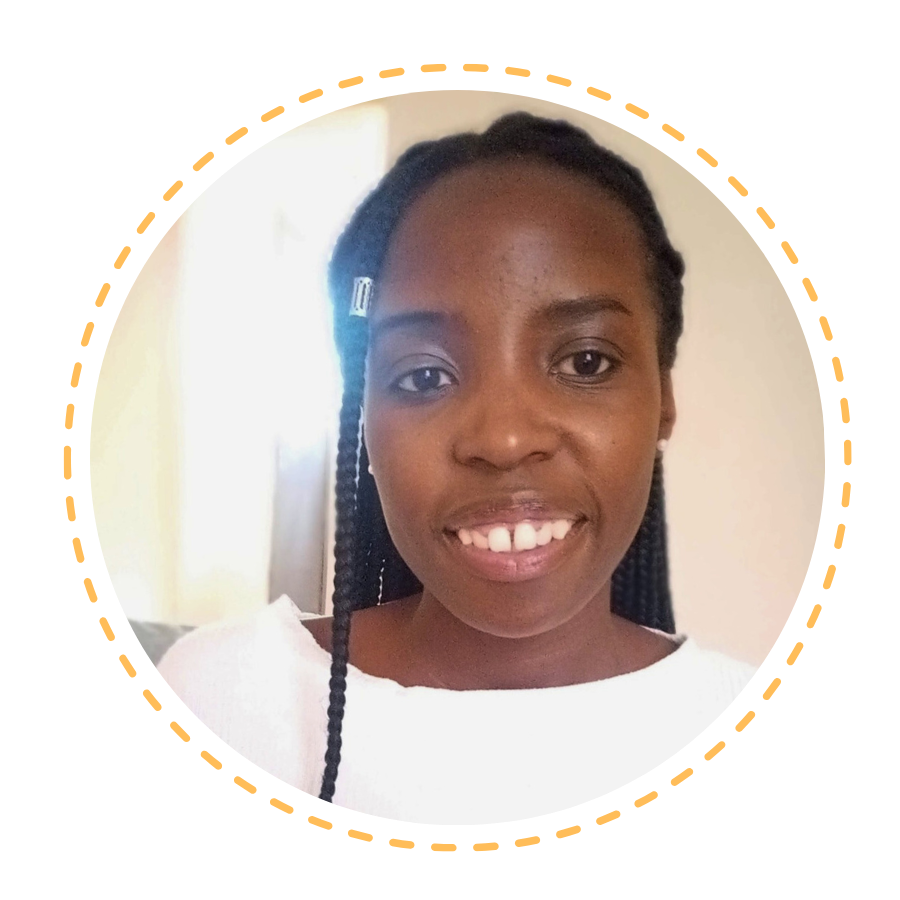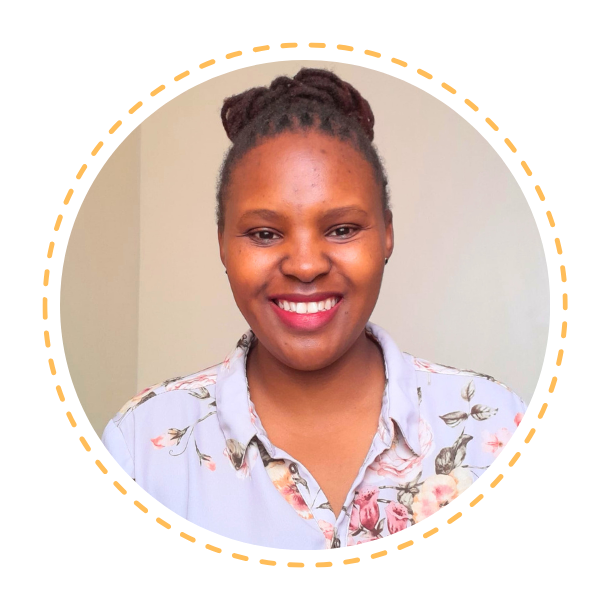-

Empowering Professional Growth: Aligning Personal and Organizational Development Goals
Read MoreEmpowering Professional Growth: Aligning Personal and Organizational Development Goals

Did you know that only 8% of people actually achieve their personal goals? In today’s fast-paced work environment, employees are expected to continuously develop their skills and adapt to shifting organizational priorities. However, a recurring challenge for many professionals lies in setting and following through on personal development goals. While organizational goals often demand immediate focus and energy, individual development goals are frequently postponed or neglected, which can stall both personal and organizational growth. This article explores the importance of aligning professional and organizational development goals to foster a culture of growth, resilience, and engagement in the workplace. By leveraging effective goal-setting strategies and industry best practices, employees can achieve their aspirations while contributing to their organization’s success.
70% of employees prioritize immediate workplace demands over long-term personal growth when faced with tight schedules or urgent projects — Harvard Business Review
The Tug of War: Balancing Organizational and Personal Goals
For many employees, personal development and organizational objectives seem to pull in opposite directions. Organizational goals, driven by revenue, efficiency, or market share, often require employees to concentrate on specific tasks, targets, or competencies. According to a study by the Harvard Business Review, over 70% of employees prioritize immediate workplace demands over long-term personal growth when faced with tight schedules or urgent projects. This focus can create a cycle where organizational goals continually eclipse personal aspirations, leaving employees feeling unfulfilled or stagnant in their roles.
Moreover, setting professional development goals can be challenging. A study published in the Journal of Workplace Learning revealed that ‘one-third of employees struggle to define their professional goals’ in clear and actionable terms. Without clear, measurable objectives, it becomes difficult to track progress or demonstrate growth, which can lead to decreased motivation and engagement.
The Power of Alignment: How Shared Goals Benefit Everyone
Aligning professional and organizational goals can be a powerful strategy for enhancing employee satisfaction and organizational outcomes. Both parties benefit when employees work toward goals that simultaneously satisfy their personal aspirations and organizational objectives. This alignment not only promotes engagement but also encourages skill-building that directly impacts business performance.
Take, for example, Google’s 20%-time policy, which allows employees to dedicate a portion of their work time to pursue projects of personal interest that could benefit the company. Many groundbreaking innovations, including Gmail and Google Maps, emerged from this initiative, showcasing how fostering personal development can drive organizational progress. Such policies encourage employees to think beyond their immediate tasks and contribute to larger company goals while fulfilling personal growth ambitions.
The GROW Model: Bridging Personal and Organizational Development
One practical way employees can align their goals with organizational needs is by using the GROW Model—Goal, Reality, Options, and Way Forward. The GROW model is widely adopted in coaching and development settings because it provides a structured yet flexible approach that helps employees clarify their aspirations while linking them to organizational goals.
Goal: Begin by defining what you want to achieve, ensuring it aligns with both your personal growth and the organization’s objectives. For instance, if your organization is focused on enhancing customer satisfaction, you might set a goal to develop your customer communication skills, which benefits both you and the company.
Reality: Assess your current situation and identify any skills or resources you already possess, as well as gaps to address. This step allows for an honest evaluation of your strengths and areas for growth, helping you to tailor your development path.
Options: Brainstorm possible actions you can take to achieve your goal. Think broadly about resources or opportunities available within the organization, such as training programs, mentorships, or project assignments that would help you grow while contributing to company objectives.
Way Forward: Outline concrete steps to start working toward your goal. Determine which options are most viable and create a timeline with specific milestones. This step not only keeps your development on track but also ensures your progress is aligned with organizational performance targets.
The GROW model makes it easier to connect individual aspirations with organizational objectives by encouraging employees to set clear, actionable steps toward their goals. This approach enhances motivation, engagement, and ensures that personal growth contributes meaningfully to the organization’s success.
Leveraging Performance Reviews to Align Goals
Performance reviews provide an ideal opportunity for employees to discuss their personal goals in the context of organizational objectives. Research from the Society for Human Resource Management (SHRM) suggests that ‘employees who engage in regular goal-setting conversations with their supervisors report higher levels of job satisfaction’. During these reviews, employees should be encouraged to share their aspirations and how they see these goals contributing to organizational success.
Consider a marketing professional who wishes to develop expertise in digital analytics—a skill that aligns well with organizational goals in data-driven decision-making. By communicating this goal with their supervisor during a performance review, the employee can receive guidance and support in pursuing relevant training or project assignments. This approach ensures that individual growth remains connected to the organization’s strategic vision.
Building a Culture of Continuous Development
Organizations that actively support personal growth can cultivate a culture of continuous learning, which benefits both employees and the company. LinkedIn’s Workplace Learning Report highlighted that 94% of employees would stay longer at a company if it invested in their career development. Initiatives such as training programs, mentorship opportunities, or educational reimbursement policies demonstrate an organization’s commitment to employee growth and satisfaction.
70% of employees prioritize immediate workplace demands over long-term personal growth when faced with tight schedules or urgent projects — Harvard Business Review
For example, Microsoft’s Learning Pathways program offers employees tailored courses and certifications that align with their current roles and future aspirations. By empowering employees with tools and resources for self-improvement, companies like Microsoft foster loyalty, enhance employee engagement, and build a workforce that’s well-equipped to handle future challenges.
Conclusion: Embracing Growth Through Aligned Goals
The synergy between professional development and organizational goals is essential for creating an engaged and resilient workforce. By setting clear, achievable, and aligned goals, employees can meet personal aspirations while contributing to the broader success of their organizations. Companies can support this process by creating an environment that values and nurtures continuous development, recognizing that employee satisfaction and performance go hand in hand.
Ultimately, achieving a balance between personal and organizational goals is not only possible—it’s essential. Employees and organizations can thrive in an ever-evolving professional landscape through intentional goal-setting, open communication, and a commitment to learning.
References
Edwards, C. (2014). How Google’s 20% time spurred innovation.
Harvard Business Review. (2019). The power of positive coaching in goal setting.
Journal of Workplace Learning. (2021). The art of setting professional development goals.
LinkedIn Learning. (2023). The workplace learning report.
Microsoft. (2022). Building employee loyalty through learning pathways.
Society for Human Resource Management. (2020). Benefits of goal-setting in performance reviews.
Statistic Brain. (2023). Goal setting statistics.
About The Author
Tionelepo Ndhlovu
Tione is a highly skilled Capacity Strengthening, Learning & Development (L&D) expert with a strong foundation in talent management, performance systems, and organizational strategy. With over a decade of experience spanning multiple sectors, Tione has made significant contributions to global health initiatives, corporate L&D, and capacity-strengthening programs across various regions.
Her expertise includes designing and implementing evidence-based learning and development systems, developing talent pools, managing performance, and creating tailored training solutions that drive organizational excellence. Tione has worked extensively on large-scale projects, empowering both individuals and institutions to meet their strategic goals through innovative, blended learning approaches. She is adept at aligning learning strategies with business priorities, ensuring long-term success and sustainable growth.
Tione’s career also reflects her commitment to fostering inclusive, strengths-based workplaces where individuals can thrive. Known for her exceptional ability to engage stakeholders and build cohesive teams, she continuously seeks to enhance employee well-being and promote professional development. Her dedication to capacity-building and L&D has made her a trusted leader in the field, helping organizations achieve high performance while empowering employees at every level.
-

Navigating the Job Market in Kenya: Strategies for Success
Read MoreNavigating the Job Market in Kenya: Strategies for Success

In the dynamic landscape of Kenya’s job market, job seekers must equip themselves with the right strategies to stand out and secure their dream positions. This article explores key tips and insights to help individuals navigate the competitive job market effectively.
Embracing Remote Work Opportunities:
Remote work opportunities are becoming increasingly popular in this day and age, and Kenya is no exception. With the rise in the popularity of internet usage and the COVID-19 pandemic accelerating this trend, many Kenyans are now exploring avenues for remote employment. Job seekers need to take advantage of this surge by researching and signing up for remote recruitment websites such as Flex Jobs, Remote.co, Indeed.com, We Work Remotely, and Platinum Outsourcing Logistics Job Board .Setting up a home office is also crucial for working remotely. One should ensure that the space is convenient and free of distractions. Additionally, technological competencies need to be adhered to. Ensure you have fast Wi-Fi and backup power to support your work.
By capitalizing on the growing trend of remote work and adequately preparing for the virtual work environment, job seekers in Kenya can enhance their chances of securing remote employment opportunities.
Leveraging HR Technologies:
Job seekers who embrace modern tools to demonstrate their adaptability and tech-savviness, positioning themselves as candidates ready to thrive in modern, digitally-driven workplaces. Are more likely to thrive in the current corporate world.
In a data-driven era, candidates who understand and leverage analytics tools showcase their appreciation for informed decision-making, enhancing their overall competitiveness in the evolving job market landscape.
Continuous Learning and Skill Development:
Continuous learning is a cornerstone of career development, playing a pivotal role in navigating the ever-evolving job market in Kenya. Job seekers should proactively acquire new skills and stay abreast of industry trends to remain competitive and adaptable. Embracing a mindset of lifelong learning not only enhances professional competence but also positions individuals as valuable assets to employers seeking versatile and dynamic team members. In the context of a rapidly changing job market, adaptability becomes a key differentiator. Job seekers who demonstrate the ability to swiftly learn and apply new skills showcase resilience and agility, qualities highly sought after by employers looking to navigate the uncertainties and innovations of the modern workplace in Kenya. In essence, a commitment to continuous learning not only fosters personal and professional growth but also equips job seekers with the tools needed to thrive in the dynamic landscape of the Kenyan job market.
Building a Strong Online Presence:
In today’s digital age, social media plays a pivotal role in the job search process, with LinkedIn emerging as a powerful platform for professional networking and career advancement. Job seekers should recognize the significance of maintaining a strong online presence to attract potential employers. Optimizing LinkedIn profiles is essential; include a professional photo, a compelling headline, and a detailed yet concise summary highlighting key skills and achievements. Regularly update the profile with relevant experience, skills, and accomplishments.
Actively engage with industry groups, share thought leadership content, and connect with professionals in your field to expand your network. Showcase your professional achievements by detailing specific projects, quantifiable results, and endorsements from colleagues.
Additionally, maintaining a positive online presence across other social media platforms is crucial. Ensure your public profiles reflect professionalism, consistency, and a genuine passion for your field. Regularly monitor and curate your online presence, as employers often research candidates online. By strategically leveraging social media, job seekers can significantly enhance their visibility and attractiveness to potential employers in Kenya’s competitive job market.
In conclusion, the Kenyan job market offers exciting opportunities for those who are well-prepared and adaptable. By embracing remote work, leveraging technology, prioritizing well-being, and showcasing diversity and continuous learning, job seekers can position themselves for success in this dynamic environment.
About The Author
Sheila Sirali Idagiza
Sheila Sirali is a dynamic Communications Officer who combines traditional communication expertise with modern digital skills. With a Bachelor’s degree in Communication and Business Administration from Daystar University, she currently serves as a Communications Assistant at Platinum Outsourcing Logistics in Nairobi. Her experience spans both internal and external communications, including successful social media campaigns, content creation, and brand management. She previously contributed to The Fred Hollows Foundation’s communications efforts and has demonstrated strong project management skills through various initiatives, including coordinating large-scale data collection efforts and implementing new enterprise systems. Sheila is particularly skilled in graphic design, social media management, and multimedia content creation, with a proven track record of increasing engagement and improving organizational visibility through strategic communications.
-

How to Start a Career in the Humanitarian Sector: A Guide for Recent Graduates
Read MoreHow to Start a Career in the Humanitarian Sector: A Guide for Recent Graduates

Do you have a passion for humanitarian and social impact work? Working in the humanitarian sector is one of the most rewarding things you can ever do. It offers you the opportunity to make a difference, or as I would love to call it “changing a little corner of your world”, in a world where there is more need to solve social issues.
Starting a career in the humanitarian sector might seem like a daunting task for you as a recent graduate with little experience. However, that doesn’t mean that it cannot be done. In this blog, I have highlighted tips that can help you navigate as a recent graduate, some of these tips can also apply to people who have work experience in other sectors but are aiming at a career change.
Passion for humanitarian work.
This is very important and will go a long way. Working in the humanitarian sector mostly involves working with communities with specific needs. Empathy and passion go a long way to make a difference.
Volunteer/Internship opportunities.
Most non-profit jobs require a bit of experience which as a recent graduate you may not have. You may consider volunteering or looking for internship opportunities to change this. This will give you an outlook of what to expect and help you build on your skills and experience. You can then apply to the same organization you are volunteering/interning at if an opportunity opens. It is important to align yourself with an organization that delivers on your interests. Show enthusiasm for the work they do and be as helpful as you can while asking questions. In short, stay curious!
Optimize your LinkedIn Profile
LinkedIn is a great platform to showcase your interests, and portfolio and even connect with like-minded people. You should always ensure that you optimize your LinkedIn profile, this could include writing a catchy headline that shows your interests and a comprehensive about you. Constantly engaging with content or writing about your interests will also put you ahead of the game. JobsToApply offers LinkedIn optimization services at a fee, this will be worth your every dime I promise.
Network with people in the sector.
I cannot emphasise enough how “your network becomes your net worth” in the humanitarian sector. Find out about events happening locally and internationally that you can attend to network. You can also reach out to people you look up to in the sector on LinkedIn or ask your connections to introduce you to someone.
Learn skills that align with most organizations.
Your skills will help set you apart from a pool of applicants while applying for a job. Some of the most important skills include fundraising, project management, communication skills, grant writing, problem-solving and critical thinking, adaptability, advocacy, social media and storytelling. You may consider upskilling in these areas. There are many free and premium resources online that you can tap into for this. Nonprofit Ready offers free online training for professionals in the non-profit sector. With a portfolio of over 600 courses, you can get started today!
Apply to a training program.
For some non-profits, they offer training to potential employees. You can take up this training to help you prepare to work for such organizations.
Some of the organizations that offer a training scheme for recent graduates include:
If you want to work with the UN, consider this recruitment programme. They have a criterion they use to select participants which includes an exam.
Oxfam has a trainee scheme that runs for 15 months. This is a paid trainee scheme that does not even require a degree. They emphasize the need for passion to solve inequalities for those interested in joining these trainee scheme.
· World Vision Graduate Internship Programme (GRIP)
This internship programme is offered annually for recent graduates. It is aimed at helping you gain experience working in the non-profit sector.
Learn a language
Have you ever come across a job that requires you to be bilingual? In my personal experience, I have been locked out of some opportunities because I did not know French. You can consider learning some of the most used languages such as French, English, Spanish and Swahili, these will prepare you to work in a diverse work environment.
Tailor your resume and cover letter.
These are important tools in your search for a job. A lot of times, people get rejected from jobs for not customizing their resume and cover letter accordingly. I have been a victim of this and still learning to do better. Every job you apply to is unique, I have found it useful to sometimes cut out some experiences from my resume completely.
Your cover letter should always show your enthusiasm for the role and the value you can deliver. It is important to also follow the requirements given to you while applying for a job such as if they asked for a 2-page resume, do not exceed this. Struggling with creating a compelling resume and cover letter? JobsToApply got you!
Conclusion
Starting a career in the humanitarian sector is a journey worth embarking on. You will get to experience first-hand the social issues communities face and deliver solutions for the same. You will learn different ways you can change the world, build on a community of your own, face challenges and innovate around these, and be an advocate of humanity in general. It changes your perspective! I encourage you to give this journey a shot.
I hope you found these tips useful.
About The Author
Elenah Kimaru
I am passionate about social impact work, writing, poetry, and nature. I believe we can change a little corner of our world in our own way, we just need to find it.
-

In their shoes: Lessons on Compassionate Leadership from the Field
Read MoreIn their shoes: Lessons on Compassionate Leadership from the Field

Working in the humanitarian sector will lead you on paths you have never trudged. You will be pushed out of your comfort zone, and sometimes go through hellfire and high waters, mostly for a good cause, but the lessons will always be worth your time and resources.
After nearly 7 years working with last mile communities, my biggest lesson has been to “lead with compassion”.
The year was 2017, I had just gotten my first assignment that kickstarted my career. I was going to work with girls rescued from early marriages and FGM in a very remote and arid area in Kenya. I remember packing my bags to leave for this assignment, uncertain of what lay ahead and how this experience would shape my outlook in life and career path.
When I arrived at my duty station, the reality of what awaited me slowly started to sink in, this place was dry, a stark contrast to where I came from, almost every household did not have tap water except for the institution I was based at. Their lifestyle was more nomadic. Having to walk long distances to access water, and grass thatched roofs for their houses, their mode of transport was mostly boda bodas(motorbike) or the occasional Probox that would be carrying livestock such as chicken or goats in the trunk. This experience pushed me out of my comfort zone and opened my eyes to the kind of privilege I had.
Here, I met brilliant young women who had a lot of hope for their futures and were eager to change their narrative. I was part of a team that was spearheading skills training for them to transition them to business owners. I spent my evenings listening to them and getting to know them better. Their stories were very touching, they showed resilience in the face of adversity and the odds they had overcome. I would hear stories of how some of them became mothers at the tender age of 14 years, at 20 years, they would be on their third child. It made me realize just how lucky I had been and why I needed to pour into their cups in my capacity. We bonded over working out in the morning as we went for morning runs and, in the evenings, as we watered little gardens they had for their agricultural lessons.
On the weekends, we would sometimes go for long walks around the community, and they would tell me stories about the seasonal rivers and the flash floods, the long distances that women had to cover to get drinking water or the hills they sometimes had to climb to get grass to thatch the roofs of their houses.
It was always their determination to learn something new that always kept me on my toes as my commitment to help contribute to their journeys deepend.
Some of the lessons I learnt from this and other experiences working in such communities include.
Key lessons in compassionate leadership
Communicate.
Communication is important. You must communicate in a way you are understood and be open to feedback. Setting up expectations goes both ways in the initial process. Communicate your expectations and allow the people you work with to let you know what their expectations are.
Adapt to fit local context.
In my years of experience, I have found out that most times whatever you set out to do might need tweaking to fit perfectly to a local context. While working in Kakamega to deliver another skills training program, I found the need to tweak our programs to suit the needs of the boys and girls we were working with. This involved listening to their feedback and considering what worked best for them. In the end, it is a win-win situation for everyone involved.
Find ways to integrate with the community.
You have to find ways to integrate with the communities you work with. Sometimes you have to adapt to their way of living which includes learning and respecting their cultures sometimes in the way you dress. You do not want to look so “foreign”. I have found it useful to research a community and ask relevant questions. In my case, my first initial interactions would also involve speaking to a local about the expectations. One time I moved to a community where I had to change my dress code totally.
Work with authority figures.
While working in communities in the last mile, I have found it useful to make acquittances with people in authority, it could be elders, village chiefs or local law enforcement. They are an important aspect especially as far as dispute resolution is concerned.
Lead with compassion!
The biggest lesson of them all is to lead with compassion! You must be empathetic in your approach as you work with communities in the last mile. Understanding and valuing their livid experiences as well as their perspectives ensures that your support is tailored to fulfil a need. It also informs how you handle communication and delivery.
Leading with compassion has taught me valuable lessons in my journey. It has reinforced the need to show up for others authentically, understand their needs, advocate for resources to meet these needs, and influence resource distribution to address these needs. I have also learnt that we all have a role to play in changing the world, and sometimes, it could be little efforts that create a ripple effect.
About The Author
Elenah Kimaru
I am passionate about social impact work, writing, poetry, and nature. I believe we can change a little corner of our world in our own way, we just need to find it.



